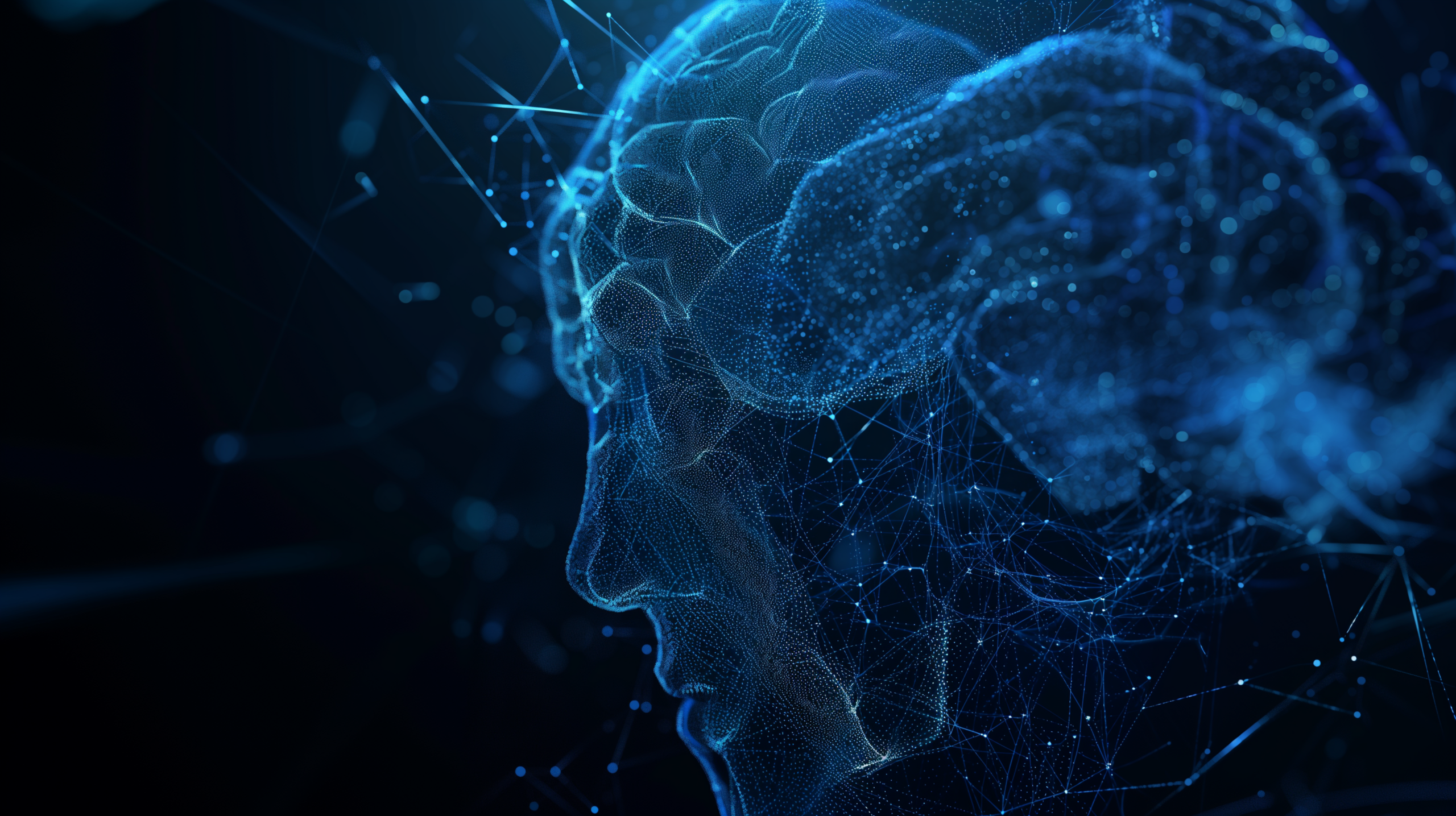Artificial Intelligence (AI) refers to the development of computer systems that can perform tasks that typically require human intelligence. It involves creating algorithms and models that enable machines to learn from data, recognize patterns, and make decisions. In essence, AI strives to replicate human-like cognitive functions, such as problem-solving, learning, and perception.
The AI term hasn’t been a foreign concept for many years, however, while it stayed mostly in the shadows as some form of “Quantum” term that collectively we’ve accepted not to fully grasp, the world was happy not caring too much about it. Now that it has jumped into the bright lights, a lot of words and concepts are being thrown around. This makes most people feel lost and think that “this is not for me”.
Truth be told, we don’t need to understand it to benefit from it, but entrepreneurs, businesses, regulators, institutions, leaders and dreamers should be excluded from this list as these make the world go round.
Let’s try to add some clarity to the confusion.
Types of AI
First of all, AI can be categorized into three main types: Artificial Narrow Intelligence (ANI), Artificial General Intelligence (AGI), and Artificial Superintelligence (ASI). These classifications represent different levels of AI capabilities, each with its unique characteristics and challenges.
Artificial Narrow Intelligence (ANI)
Artificial Narrow Intelligence, also known as Weak AI, refers to AI systems designed and trained for a specific task or a narrow range of tasks. ANI excels at performing well-defined functions, such as speech recognition, image classification, or playing board games. Examples of ANI include virtual personal assistants like Siri or Alexa, and recommendation algorithms on streaming platforms. While ANI is powerful within its specialized domain, it lacks the ability to generalize knowledge or perform tasks outside its designated scope. Its limitations arise from the narrow focus, making it dependent on specific data and predefined rules.
Artificial General Intelligence (AGI)
Artificial General Intelligence aims to develop machines with human-like cognitive abilities, allowing them to understand, learn, and perform any intellectual task that a human can. AGI is characterized by flexibility and adaptability across a wide range of activities, exhibiting problem-solving skills comparable to humans. Imagine AGI as a robot that can adapt to any household chore, from doing the dishes to mowing the lawn. It’s not limited to a predefined set of tasks, showcasing human-like flexibility and problem-solving across various domains.
We’re not here yet. Achieving AGI poses significant challenges, as it requires machines to comprehend diverse information, reason abstractly, and generalize knowledge across different domains. While AGI (still) remains a theoretical concept, its pursuit raises ethical concerns about the potential impact on society and the need for robust safety measures.
Artificial Superintelligence (ASI)
Artificial Superintelligence represents a hypothetical stage where AI surpasses human intelligence in every aspect. ASI would possess capabilities far beyond human comprehension and exhibit superior problem-solving, creativity, and decision-making skills. I’m talking Terminator, Matrix-level AI here.
The concept of ASI raises existential concerns, as its potential impact on society, ethics, and the control mechanisms required to ensure its alignment with human values become crucial. Developing ASI safely requires addressing complex challenges related to ethical considerations, control mechanisms, and the potential risks associated with an intelligence surpassing human capabilities.
Understanding these three levels of AI—ANI, AGI, and ASI—provides insight into the evolving landscape of artificial intelligence, with each level posing its unique opportunities and challenges. The progression from narrow to general to superintelligence represents a continuum of increasing complexity and capabilities, each requiring careful consideration for responsible development and deployment.
Machine Learning
Machine Learning (ML) is a subset of AI that focuses on developing algorithms that enable computers to learn from data. Unlike traditional programming, where explicit instructions are provided, ML systems improve their performance over time through exposure to new data. The fundamental process involves feeding data into a model, allowing it to identify patterns, and using those patterns to make predictions or decisions. This data-driven approach enables machines to evolve and adapt, making ML a powerful tool for tasks such as image recognition, language translation, and fraud detection.
Types of Machine Learning
Machine Learning can be broadly classified into three types: Supervised Learning, Unsupervised Learning, and Reinforcement Learning.
Supervised Learning involves training a model on a labeled dataset, where the algorithm learns to make predictions by associating input data with corresponding output labels. Unsupervised Learning deals with unlabeled data, where the model identifies patterns and relationships without predefined categories. Reinforcement Learning, inspired by behavioral psychology, involves an agent learning by interacting with an environment and receiving feedback in the form of rewards or penalties.
To make things a lot simpler, supervised learning is like teaching a dog specific tricks by showing and rewarding. Unsupervised learning is similar to observing a dog play and recognizing patterns in its behavior without explicit commands. Reinforcement learning is similar to training a dog through rewards and penalties for desired and undesired behaviors.
Limitations Of Machine Learning
Despite its transformative capabilities, Machine Learning has its limitations. ML models heavily rely on the quality and quantity of the data they are trained on, making them susceptible to biases present in the data.
Interpretability and explainability of ML models pose challenges, especially in critical applications where decision-making transparency is essential. Think of ML models as chefs following a recipe. If the recipe is flawed (biased data), the dish won’t turn out right. Additionally, understanding how and why the dish tastes a certain way (interpretability) might be challenging, just like explaining complex ML decisions.
Additionally, ML models may struggle when faced with tasks requiring common-sense reasoning or contextual understanding. Acknowledging these limitations is vital for responsible and ethical implementation of ML systems.
Types Of Problems Solved Using Machine Learning
Machine Learning is like a super-smart tool that can help us with various problems. Here are some types of problems it’s great at:
- Classification Problems: Think of sorting things into groups. For example, it’s like a spam filter sorting emails into “spam” or “not spam.”
- Regression Problems: Imagine predicting something that keeps changing, like the price of houses. Machine Learning can help guess or predict those changing values.
- Clustering: Picture putting similar things together. Machine Learning can group similar data points, like grouping similar movies or songs based on what you like.
- Anomaly Detection: This is like finding something unusual or weird in a bunch of data. Machine Learning can help identify patterns that stand out.
- Recommendation Systems: Think about how Netflix suggests movies you might like based on what you’ve watched before. That’s Machine Learning making recommendations.
- Image Recognition: Imagine a computer recognizing what’s in a picture. Machine Learning can help computers “see” and understand images.
Machine Learning is like a problem-solving wizard that can handle all these different tasks. Understanding these capabilities is important because it helps us use Machine Learning in lots of different areas to make our lives easier.
Deep Learning
Deep Learning is a subset of Machine Learning that focuses on neural networks with multiple layers (complicated stuff). These layers allow the model to automatically learn hierarchical representations of data. Deep Learning excels in tasks such as image and speech recognition, natural language processing, and autonomous driving. The complexity of deep neural networks enables them to capture intricate patterns in data, contributing to their success in handling large-scale and high-dimensional information.
Visualize deep learning as a team of art scholars inspecting a painting layer by layer. Each scholar specializes in recognizing specific details, and together, they unveil the intricate patterns and details within the artwork.
Deep Learning Use Cases
Deep Learning has witnessed remarkable success in various applications. Image and speech recognition, language translation, and autonomous vehicles are some notable examples. In healthcare, deep learning aids in medical image analysis and drug discovery. Financial institutions leverage it for fraud detection and risk assessment. The entertainment industry utilizes deep learning for content recommendation and personalization. Understanding these use cases showcases the breadth of impact that deep learning has across industries.
AI vs Machine Learning vs Deep Learning
Artificial Intelligence, Machine Learning, and Deep Learning are often used interchangeably, but they represent distinct concepts. AI is the overarching field, encompassing any technique that enables machines to mimic human intelligence. Machine Learning is a subset of AI, focusing on algorithms that learn from data. Deep Learning is a further subset of Machine Learning, specifically referring to neural networks with multiple layers. While AI is a broad concept, encompassing rule-based systems and expert systems, Machine Learning and Deep Learning specifically pertain to data-driven approaches, highlighting the hierarchy of these terms.
NLPs
Natural Language Processing (NLP) is a branch of AI that focuses on enabling machines to understand, interpret, and generate human language. NLP algorithms allow computers to interact with humans in a way that feels natural, involving tasks like language translation, sentiment analysis, and chatbots. NLP bridges the gap between human communication and machine understanding, making it an integral component in applications ranging from virtual assistants to language translation services.
How about LLMs?
Probably one of the acronyms of 2023, Large Language Models (LLMs) are a class of NLP models that have gained prominence in recent years. These models, such as GPT-4, are pre-trained on vast amounts of data and can generate coherent and contextually relevant text. LLMs showcase the capabilities of deep learning in language understanding and generation, paving the way for advancements in conversational AI, content creation, and information retrieval.
NLPs and Text Mining
Natural Language Processing involves a series of techniques and algorithms that allow machines to understand and process human language. It encompasses tasks like tokenization, part-of-speech tagging, named entity recognition, and sentiment analysis. Text Mining, a related field, focuses on extracting valuable information and knowledge from unstructured text data. Consider text mining as extracting valuable nuggets of information (gold) from a vast mine of unstructured text. NLP techniques act as the mining tools, sorting through the data to unearth insights.
NLP and Text Mining leverage machine learning and deep learning techniques to derive meaning from textual data, enabling applications like language translation, chatbots, and information extraction from large datasets.
Final thoughts
Right, a lot more complicated words have been introduced, but hopefully the connection between all of these concepts is somewhat clearer. What’s important is that the language becomes less gibberish and more familiar, that we open up our creativity to the possibilities out there, and slowly start to think in AI possibilities rather than limiting our imagination.
Related Articles

Deploying NestJS Microservices to AWS ECS with Pulumi IaC
Let’s see how we can deploy NestJS microservices with multiple environments to ECS using...
Read more
What is CI/CD? A Guide to Continuous Integration & Continuous Delivery
Learn how CI/CD can improve code quality, enhance collaboration, and accelerate time-to-ma...
Read more
Build a Powerful Q&A Bot with LLama3, LangChain & Supabase (Local Setup)
Harness the power of LLama3 with LangChain & Supabase to create a smart Q&A bot. This guid...
Read more
Demystifying AI: The Power of Simplification
Unleash AI's power without the hassle. Learn how to simplify complex AI tasks through easy...
Read more


